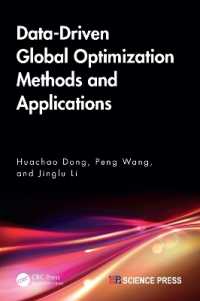Full Description
What if you could challenge your fourth graders to create a minimally invasive, highly efficient dam? With this volume in the STEM Road Map Curriculum Series, you can! Hydropower Efficiency outlines a journey that will steer your students toward authentic problem solving while grounding them in integrated STEM disciplines. Like the other volumes in the series, this book is designed to meet the growing need to infuse real-world learning into K-12 classrooms.
This interdisciplinary, four-lesson module uses project- and problem-based learning to help students create a highly efficient dam that has a minimal impact on the environment. Students will explore the use of natural resources to provide energy needs, specifically hydropower, while exploring the workings of watermills, wind turbines, and generators to help build an understanding of the effects of dams. In creating their dam, they will learn about the various types of alternative hydropower sources, including wave and tidal power, and track the progress of electrification in the U.S. on a timeline; alongside researching the positive and negative consequences of hydropower.
To support this goal, students will do the following:
Use the engineering design process (EDP) to create a design for a dam, wind turbine, and water wheel
Compare and contrast renewable power sources
Evaluate power sources for efficiency
Identify positive and negative consequences of human modifications of the environment
Identify and describe how several sources of renewable energy are used across the U.S.
Use mapping skills to determine where natural resources are being accessed for energy usage
Effectively utilize shapes, materials, and measurements to create a model of a hydropower system
The STEM Road Map Curriculum Series is anchored in the Next Generation Science Standards, the Common Core State Standards, and the Framework for 21st Century Learning. In-depth and flexible, Hydropower Efficiency can be used as a whole unit or in part to meet the needs of districts, schools, and teachers who are charting a course toward an integrated STEM approach.
Contents
Part I: The STEM Road Map: Background, Theory, and Practice 1. Overview of the STEM Road Map Curriculum 2. Strategies Used in the STEM Road Map Curriculum Part II: Hydropower Efficiency: STEM Road Map Module 3. Hydropower Efficiency Module Overview 4. Hydropower Efficiency Lesson Plans Lesson Plan 1: Wind Wheels Lesson Plan 2: Water Wheels Lesson Plan 3: Under Pressure: Water Pressure and Dams Lesson Plan 4: The Big Changes for Millside Corners Design Challenge 5. Transforming Learning with Hydropower Efficiency and the STEM Road Map Curriculum Series








